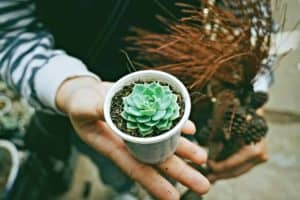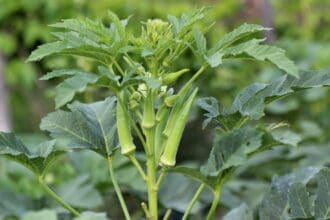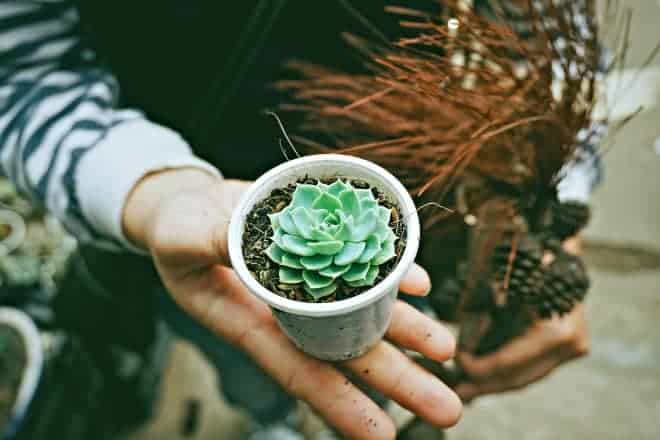
via: Unsplash / Tony Lam Hoang
Learning how to care for succulents can be challenging, as anyone who's tried to grow plants in their house likely knows. If you've been trying to take care of succulents but feel like you have a black thumb when it comes to gardening, you're not alone -- anyone who is successful at caring for succulents has definitely experienced failures with their indoor plants, too.
Whether you're studying up before you bring your first succulents home, or struggling to care for the plants already in your home, this guide will help you navigate the vagaries of indoor succulent care. In it, you'll learn about the main varieties of indoor and outdoor succulents, as well as surefire tips and tricks to keep them alive and healthy no matter the season.
Contents
What are Succulents?
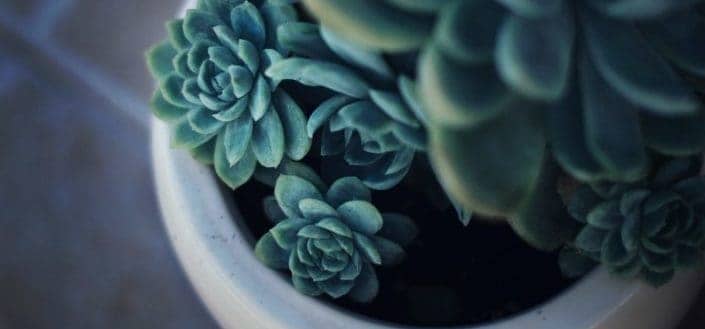
via: Unsplash / Yousef Espanioly
Succulents are most easily distinguished by their thick, fleshy, moist plant parts that help them to retain water in arid climates or soils. Their name derives from a Latin word meaning "sap", and refers to their ability to store huge quantities of nutrients even in harsh desert climates.
Are succulents and cacti the same thing? Not quite. While many cacti are succulents, not all succulents are cacti. You'll know that you're looking at a cactus if it has spiny extensions from its main body; otherwise, it's just a regular, everyday succulent.
Why is Knowing How to Care for Succulents So Important?
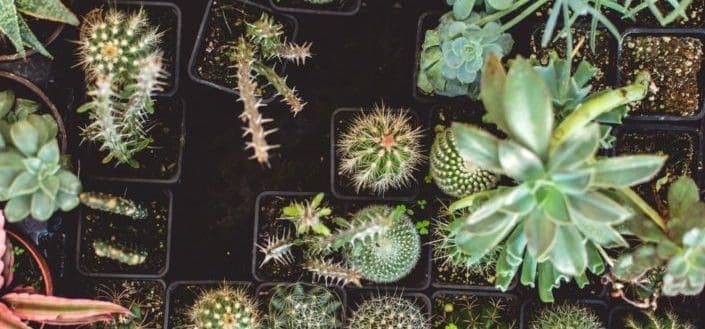
via: Unsplash / Ben Weber
Though they are renowned for being a very low-maintenance type of plant to care for, succulents still require careful attention if they're to remain healthy and vibrant. If you don't know how to care for your succulents, you'll run the risk of over-watering or under-sunning them -- leading to a sad but inevitable decline for your beloved houseplants.
How to Care for Succulents
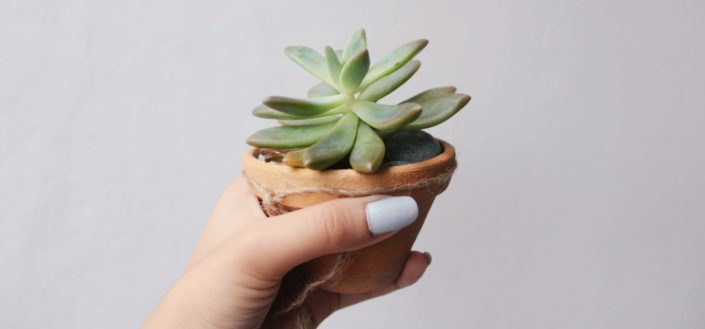
via: Unsplash / Fabiola Peñalba
Caring for your succulents comes down to three main things. Knowing the types of succulents you're dealing with and how often to water them will take care of any plants you buy from a store, but you may also want to learn how to plant succulents. Let's cover each of these in more detail.
1. Know the Types of Succulents
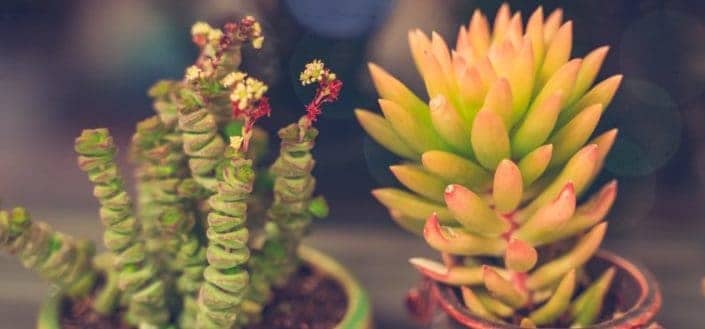
via: Unsplash / Jerry Wang
While the wide variety of types of succulents can almost all be planted indoors or outdoors, there are specific varieties that do best in just one environment. By knowing where each plant is most likely to thrive, you'll set them up to grow well with a minimum of extra care and attention. Choose from any of the following plants to set yourself up for succulent growing success!
The top three indoor succulents include:
- Jade Plant: Long-lived succulents with thick, woody stems and plump oval leaves, the Jade Plant is many an indoor gardener's first recommendation for beginners. Properly cared for, they can reach heights of three feet or more and live for decades. They thrive in warm, dry, full sun conditions and cannot tolerate temperatures below 50 degrees F.
- Echeveria: Beautiful rose-shaped succulents that come in a variety of colors and sizes, Echeveria flower readily and grow quickly compared to other succulents. These native Mexican plants do well in containers, and are very forgiving -- even tolerating the occasional over-watering or chilly night. Look for the Echeveria Peacockii variety if you'd like to see a stunningly unique silvery-blue succulent.
- String of Pearls: Also known as "string of beads" or "the rosary plant", this perennial vine is native to Southwest Africa. String of Pearls are especially renowned for how easy they are to propagate -- simply cut a small strand off and place it in new soil, where it will readily take root. They do best in bright light, so consider putting one in your windowsill to keep it healthy and happy.
The top three outdoor succulents are:
- Aloe Vera: Native to the Arabian Peninsula, this evergreen perennial plant is grown worldwide for both agricultural and medicinal purposes. Resistant to pets and highly tolerant of drought, it's a popular addition to outdoor gardens that requires little more than an occasional watering to stay healthy and grow vigorously. It has long been considered an effective remedy for burns and other acute skin conditions.
- Agave: The plant species responsible for making tequila, the famous Mexican liquor, Agaves are available in a large number of varieties that are suitable for any hot and dry backyard. While the smallest will remain within a foot of the ground for their whole lives, some species of Agave can grow well over 6 feet tall. Sometimes known as the "century plant", they grow very slowly and require little water.
- Sempervivum: How about a succulent that makes copies of itself for you to distribute? That's what you'll get with any variety of Sempervivum, a plant that can survive through almost complete neglect and requires almost nothing to continue growing. Their attractive rosettes require only a hot and dry climate with relatively quick-draining soil. Available in a wide variety of shapes, sizes, and colors, they can fill in spots in a garden where other plants are unable to put down roots.
2. How Often Should You Water Succulents?

via: Unsplash / Trung Thanh
Most people are attracted to growing succulents in the first place because of their relatively easy care, compared to other houseplants. This is definitely true as far as watering goes, with most succulents requiring one watering every week -- and some especially hardy varieties needing to be watered not more than once per month.
More important than how to water succulents, however, is making sure that they are planted in well-draining soil.
The thick, compact soil that plays home to most flowers and houseplants holds onto too much water for succulents, and can quickly cause their roots to rot.
Instead, always make sure that your succulents are planted in soil that is porous and drains easily; Continue reading the next section to discover exactly what sort of soil is best.
Once your succulents are planted in the appropriate soil, all you'll need to do is make sure the soil is completely dry before re-watering. Simply stick your finger an inch or more beneath the surface: if the soil is dry, it's time to water your succulent.
How To Plant Succulents
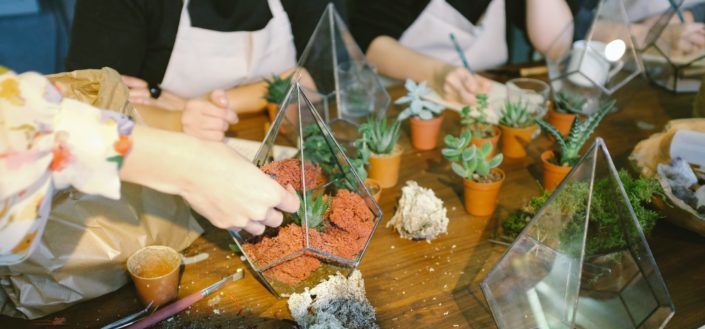
via: Unsplash / Neslihan Gunaydin
While no two plants require the exact same care and conditions for planting, there are general rules for how to plant succulents that are good to keep in mind.
First, be sure to choose the right type of soil. Look for pre-mixed succulent soil, or simply add an equal portion of sand to potting soil for a quick fix.
Next, fill your planting container almost completely full with the soil, leaving about an inch of space at the top of your planter. Gently nestle your succulent's roots into this layer, then add the final inch of soil to bring it flush with the top of the container.
At this point, you can consider adding a top dressing to enhance your planting's looks and heat retention. Small rocks or pebbles do a fine job of sprucing up your plant's new home.
Lastly, wait one or two days before watering. This step is essential! If you water your succulent as soon as it's settled into new soil, the roots will often fail to take -- leaving you with a dead succulent in no time.
More Awesome Guides To Plants
Are you crazy for house plants? Just can't get enough of having fresh greenery all over your home or apartment? Then check out these awesome plant guides:
- Tropical house plants can be tricky to grow, so be sure to check out this guide filled with tips and tricks for their cultivation.
- Just getting started with indoor growing? This guide to the many types of house plants is just what you need.
- You'll never pay for avocado toast again once you know how to grow an avocado tree!
In Conclusion
Thank you for reading this guide on how to care for succulents! With all the helpful hints and tips you've gained, you'll surely be successful in caring for succulents in your home. Put them to good use as you take care of succulents, and you'll be a happy plant parent in no time!


